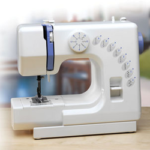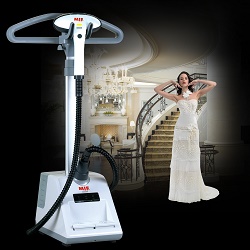Rules of work on overlock
To buy a good overlock does not mean to get a perfectly tailored product with an ideal overlay. It is important to carefully study the instructions and adjust the operation of the device, as well as to select the correct threads. The machine can be multifunctional and perform several types of seams, each of which requires individual adjustment. Let's take a closer look at how to use overlock.
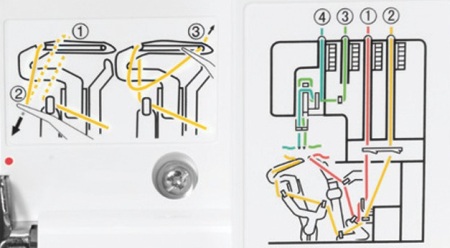
Content
Threading
The first difficulty that happy owners of an overlock machine face is threading. It is quite complex, especially for beginners. In the Internet - resources professional masters offer viewing videos with demonstration of the correct settings. The scheme of threading on overlock is described in detail. in the instructions. But there is a big plus - it is enough to do it once according to the scheme,and then you can tie up the threads of each new coil to the already filled. If you look at the steps step by step, it will look like this:
- trim the thread from the old spool;
- tie the thread of the new coil to the old one;
- raise the foot and tighten the new thread through looper, to make it easier to pass the bundle;
- trim the knot near the eye of the needle and refill.
Seam selection
The next step is to choose obmetochny seam depending on the structure of the fabric. If a regular non-professional overlock is used, there will be only 2 needles and 2 loopers. This machine can perform 3 and 4 thread seams. The choice depends on the material used and the purpose of the seam.
If you need to brush over the edges of the fabric and simultaneously sew with another trim, apply 4-thread seamwhere 2 needles are involved. In this case, the seam is strong, and the fabric is not torn when tensioning. It is often used to sew knitwear on overlock. Less expensive in terms of thread - 3-thread seam. The application area is slices that only require edge processing.
For a thin fabric, it is better to make the seam as narrow as possible, for this it is necessary to remove the left needle.When using dense or loose fabrics, you can remove the right needle to get a wider suture.
Having defined the type of seam and tucked the thread, you can proceed to the line. For beginners it is better to practice on the rags, performing a straight line. Thus, you can see in advance how the selected stitch will look on the fabric and make sure that the dressing is done correctly and the threads are not torn.
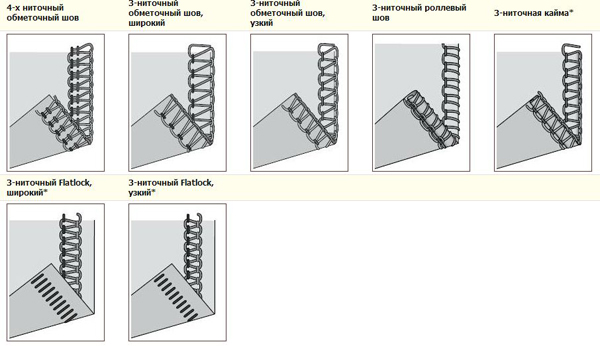
How to scribble on overlock
Work on the overlock can be easy, if not the first meter of fabric is processed with its help. Even experienced craftsmen have to adapt again when switching to a new overlock machine. If the product was sewed before with one method, on a new machine, things may be different. It is necessary to train on the edges of the fabric until the expected result is obtained.
For execution straight seams technological process is as follows.
- Put the foot on the edge of the cut along the seam.
- If the edges are uneven, it is not necessary to cut, there is a knife in the overlock, which makes the cut extra fabric. Since the width of the foot is 1.5 cm, the allowance will remain sufficient for the formation of an overstitched seam.
- We sew a seam on a straight stretch of fabric.
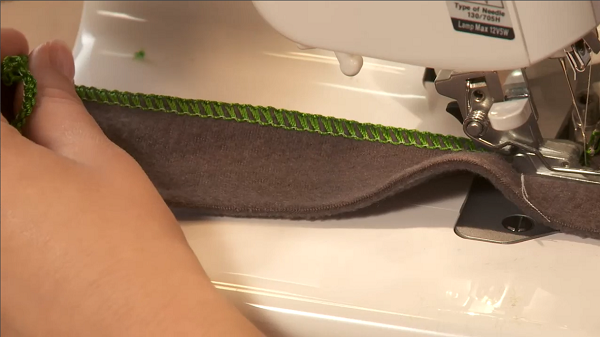
After obtaining the necessary stitch, you can proceed to more complex manipulations. Namely, due attention should be paid rounding and cornering. This will require the skill or advice of professionals. You can also see the nuances of sewing on the overlock on the Internet. Depending on the radius of the rounding, a different technique is used.
- To overlay the edge over a larger radius, it is necessary to tighten the fabric in the direction of rounding.
- For small radii, the movement should be slow, up to a stop, with jerking the line.
- If you sew elements with pronounced right angles on the overlock, at each turn you must stop the overlock, raise the foot and turn the fabric. The continuous line goes further to the next corner.
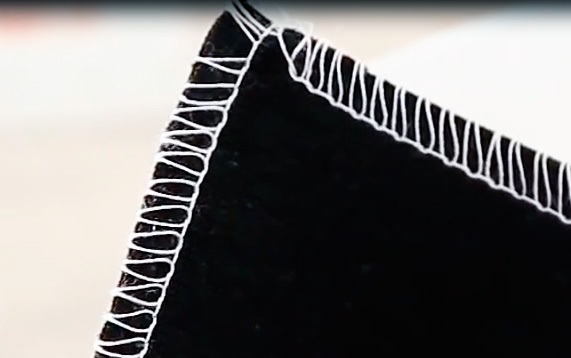
Machining outer corner
There is a difference between the outside and inside corners. If an external cut is stitched, a line should be drawn until the needle extends beyond the fabric limit. For the inside corner, to prevent cutting with a knife, it is worth making a bend in the fabric.
The peculiarity of work with knitwear
Sewing machine sews knit hard, as it is thin, stretches heavily, crumbles at the cut point.An overlock machine is more suitable for this type of fabric. Knitwear is very comfortable to wear, but it requires certain conditions when sewing. So, how to sew knitwear? This fabric requires maximum joint elasticitywhich will stretch and at the same time maintain its former shape. Knitting clothes are always very noticeable errors in the line, moreover, when washing it can disperse. For sewing such products overlock is the most suitable with the possibility of a differential supply of knitwear.
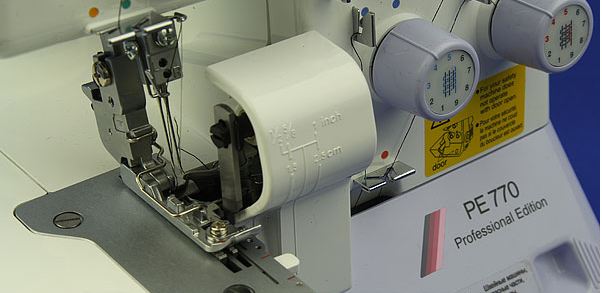
Overlock JUKI PE 770 PROFESSIONAL EDITION
The fabric is fed on a special conveyor that allows you to stretch or tighten the fabric where it is required.
For quality processing of the neck, armhole and bottom products will need the appropriate overlock setting.
- Need thin thread for knitwear, in extreme cases, you can replace polyester.
- Special needles "stretch" will be required.
- You can sew a gum or make a neck by installing an additional knit foot.
- Laid on the fabric, which is then dissolved in warm water.
After replacing all the necessary elements, you need to configure the overlock to work with knitwear.To do this, adjust the needle tensioners and looper, as well as the presser foot. Given that the design of the overlock from different manufacturers is different, there may be some nuances in the performance of the seams. This indicator affects foot length and the distance from her knife. If the distance is small, it is easier to do maneuvers. With an elongated foot, it is harder to round a small radius.
For the product to be flawless, and there is a desire for new designer fabrications, it is important to work out the implementation of beautiful and durable seams on test fabric.

/rating_off.png)






